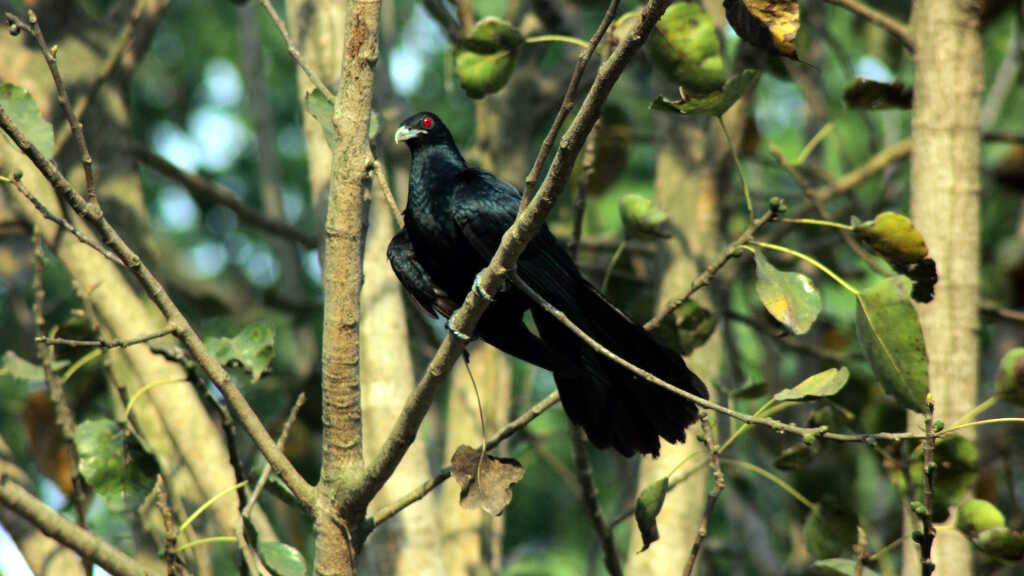
Eudynamys scolopacea ( Asian Koel)
The Asian Koel (Eudynamys scolopacea) is a well-known bird in the Great Himalayan National Park (GHNP), celebrated for its melodious and far-reaching calls. Often heard more than seen, this bird is an essential part of the avian soundscape in GHNP, especially during the breeding season when its calls echo through the forested valleys.
Distinctive Features and Behavior
The Asian Koel is a member of the cuckoo family. Males are glossy blue-black with striking red eyes, while females have a brownish body with white and buff streaks and spots. Known for their loud “koo-oo” calls, they are more vocal during early mornings and late evenings.
Uniquely, the Asian Koel is a brood parasite—it lays its eggs in the nests of other birds, such as crows, leaving the host to raise its chicks. This survival strategy allows koels to invest energy in mating and calling, rather than in parental care.
Habitat in the Great Himalayan National Park
In GHNP, the Asian Koel can be found in subtropical and temperate forests, often inhabiting areas close to water sources or near human settlements where host species are more abundant. Its ability to adapt to various environments makes it a common yet vital species within the park’s ecosystem.
| Common name | Asian Koel |
| Scientific name | Eudynamys scolopacea |
| Family | Cuculidae |
| Description | It is 43cm, resident bird of Himalayas and male is greenish black, with pale green bill. The eye is reddish in case of both male and female. Female is spotted and barred with white. It prefers open woodland, gardens and cultivation for their habitat. It is commonly found in an altitude of 2400m. The male is glossy bluish-black, with a pale greenish grey bill, the iris is crimson, and it has grey legs and feet. The female of the nominate race is brownish on the crown and has rufous streaks on the head. |
Ecological Significance
By helping control insect populations and contributing to seed dispersal, the Asian Koel plays an understated but important role in GHNP’s biodiversity. Its brood parasitism also influences the behavior and evolution of host bird species, shaping the ecological dynamics of avian communities.
Cultural and Seasonal Relevance
The koel’s calls are strongly associated with the arrival of spring in many parts of India and are frequently referenced in literature and folklore. In GHNP, their appearance and vocalizations signal seasonal change, enriching the natural ambiance of the park.
Conclusion
The Asian Koel (Eudynamys scolopacea) is more than just a bird with a beautiful song—it is a crucial contributor to the biodiversity and cultural tapestry of the Great Himalayan National Park. Its presence indicates a thriving ecosystem, and its unique behaviors offer insights into nature’s intricate designs. Protecting habitats like GHNP ensures that the haunting call of the koel continues to be heard for generations to come.



